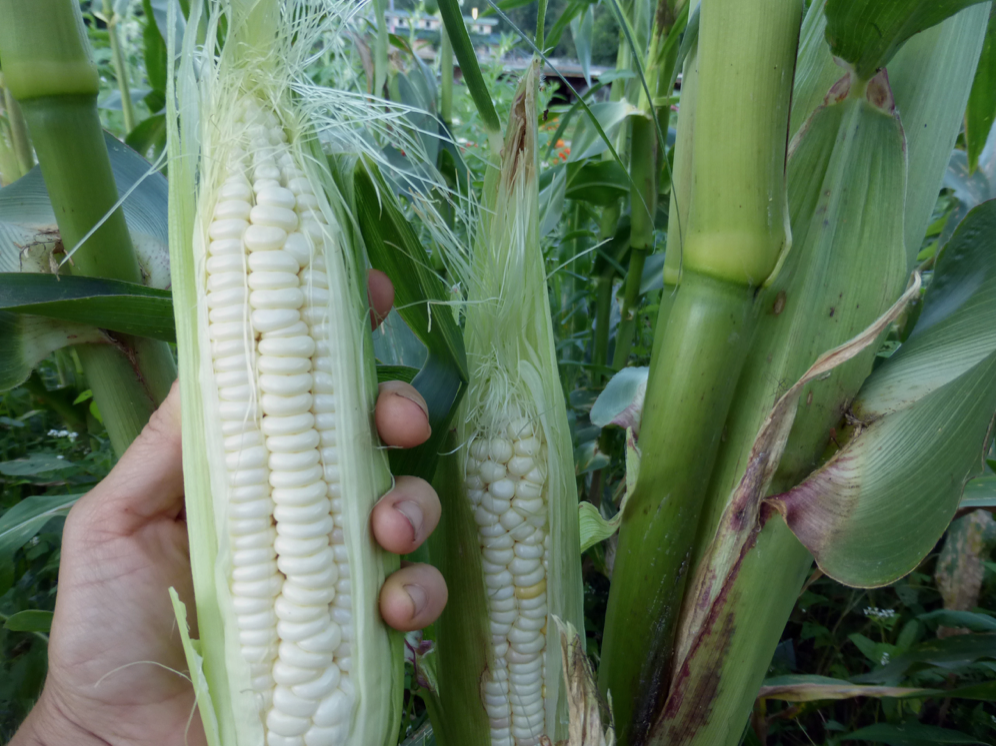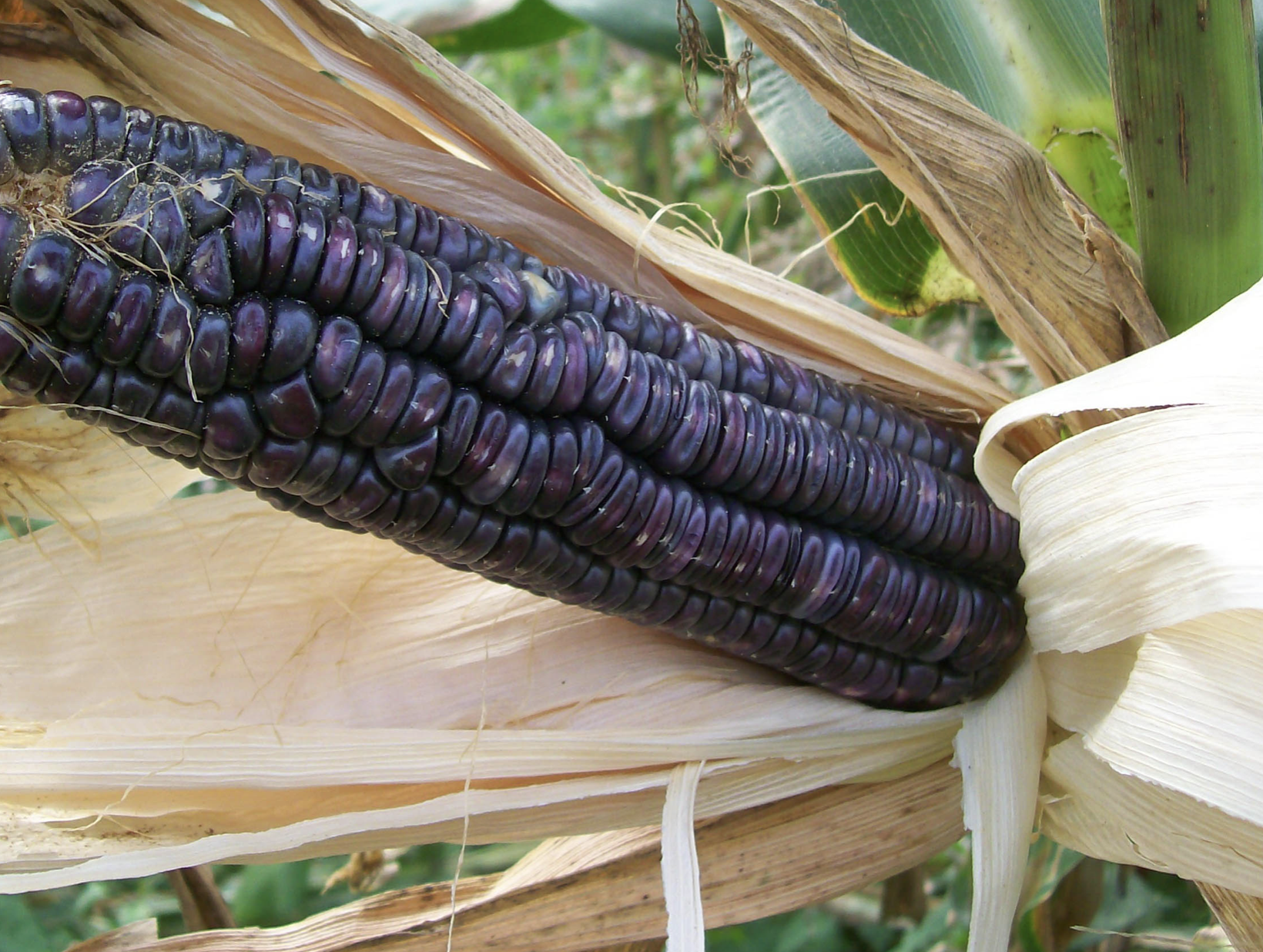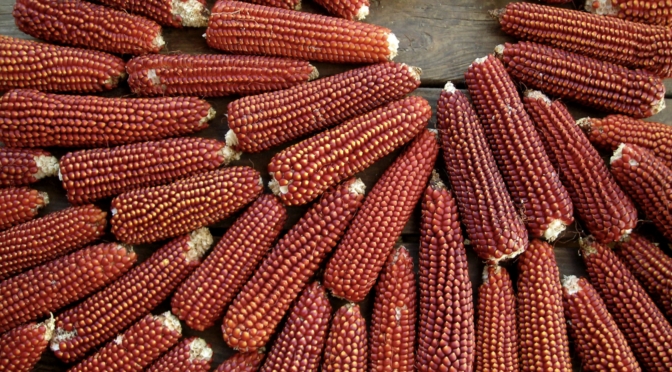When I started gardening, I only had the vaguest of understandings of different types of corn. My family had grown some hybrid sweet corn, and I knew that the popcorn they sold in the stores and the stuff people used as decorations in the fall were different. If you’re new to gardening or heirlooms, you might be in the same place. Browsing catalogs that offered heirloom and open-pollinated varieties of corn opened my eyes to the wide range of possibilities. It can be a bit overwhelming, so here are a few things to consider when selecting corn for the home garden.
 Hybrid Sweet Corn
Hybrid Sweet Corn
We carry two varieties of hybrid sweet corn at SESE. Hybrid sweet corn has the advantage of typically maturing all at once, which can be helpful for some farmers. Most hybrids have also been bred to be extra sweet and to hold their sweetness after being harvested. Hybrid corn also has weak seedling vigor and doesn’t perform well in cool soil. For good pollination and ear development, open-pollinated corn should be planted in blocks at least four rows wide.
 Open-Pollinated Sweet Corn
Open-Pollinated Sweet Corn
Unlike hybrid sweet corn, open-pollinated varieties often don’t mature all at once and aren’t always uniform in size. This feature can be helpful for home gardeners looking to harvest over a more extended period. They also have a more old-fashioned corn flavor that many home gardeners and seed savers value. The seedlings tend to be more tolerant of insect damage and cool temperatures than their hybrid counterparts. Open-pollinated corn should be planted in blocks at least 5-6 rows wide for good pollination and ear development.
 Popcorn
Popcorn
Unlike sweet corn, you harvest popcorn when it’s fully mature and dry. You’ll then need to dry it further for it to pop nicely. Popcorn can be removed from the ear by hand or with a sheller to make the process easier. Today, we mainly use popcorn for popping, but traditionally some Native Americans also ground popcorn to make bread.
 Flint, Dent, & Flour Corn
Flint, Dent, & Flour Corn
All three of these broad categories are types of grain corn. However, they differ in climactic adaptation, kernel composition, kernel shape, and best culinary uses.
Flint corns are a traditional favorite of the northeast because they thrive in cold, wet climates. They have hard, pointed kernels and are a good choice for cooking methods that involve boiling, like making polenta or johnnycakes.
Dent corns are what we focus on at Southern Exposure. They are typically heirlooms of the southeast and midwest. They get their name from their tell-tale dent created by a flinty ring surrounding a floury center which sinks and creates the characteristic dent as it dries out. Heirloom dent corns make excellent cornbread, hominy, and roasting ears. Some old-timers prefer eating the starchy dent corns in the same manner as sweet corns.
Flour corns are commonly grown in the Southwest but have been grown in many areas. They have soft, rounded kernels and, as the name suggests, are typically ground into flour. Their soft kernels create fine flour that can be used like wheat flour and is excellent for baking.
 Gourdseed Corn
Gourdseed Corn
Gourdseed our one of our oldest corns and dates back to at least 1700. They were once commonly grown in southern Virginia and were used for feed, roasting, and flour. The plants are heavily stalked and bear ears having a large number of rows of thin, deep kernels. Some varieties were so easy to shell that it only took a light touch to the ear.
Gourdseed corns were grown until about 1940 before hybrids became popular. In 1889, gourdseed corn won the Great Corn Contest sponsored by the American Agriculturist, yielding 255 bushels per acre. Because of interest in hybrid corn, gourdseed corns were virtually extinct by the 1960s, but recently they have been found to be valuable because of their resistance to some diseases, notably southern leaf blight. After a year-long search for this disease-resistant variety, Dr. Brown, former president of Pioneer Hi-Bred rediscovered gourdseed corn on a Texas farm.
There’s so much more diversity to explore than just a few varieties of sweetcorn you’ll find at your local grocery store. I highly encourage anyone with the space to grow some of their own corn and experience the joy of tasting sweet and nutty cornbreads, colorful, buttery popcorns, or sweet corns with vibrant flavors and histories.

